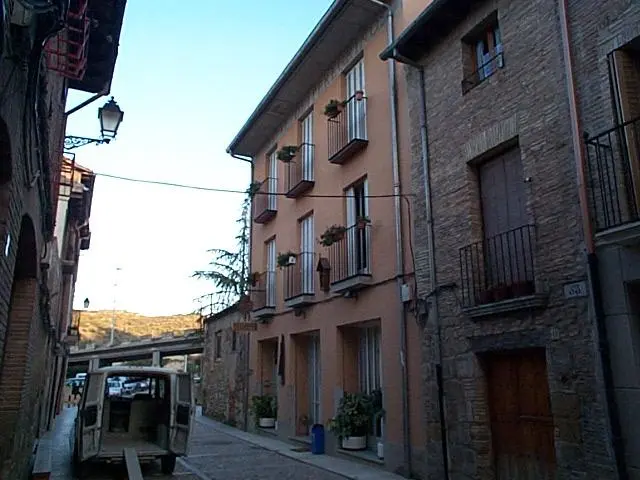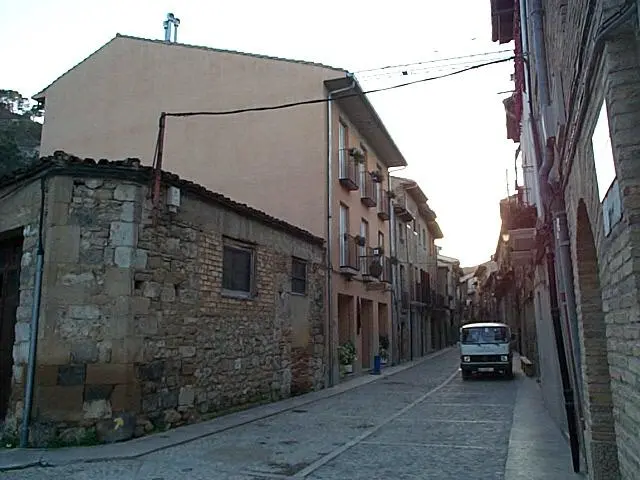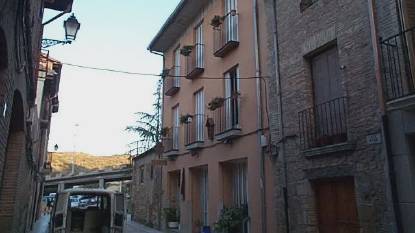
Camino Francés: Puente la Reina to Estella - Stage 5
Posted: | Updated:
Reading time: 7 minutes
Camino Francés: Puente la Reina to Estella - Stage 5
Posted: | Updated:
Reading time: 7 minutes
By: Simon Kemp, Editor
Stage 5 of the Camino Francés is a 21.6 km trek from the picturesque town of Puente la Reina to the charming town of Estella. This stage is marked by varied terrain, including rolling hills, vineyards, and small villages, making it a favorite among many pilgrims. Along the way, walkers will encounter a range of cultural and historical landmarks, making it a fascinating journey for both nature and history lovers.
Starting Point: Puente la Reina
Puente la Reina is a charming medieval town located in the province of Navarre in northern Spain. The town is situated on the banks of the River Arga and is known for its stunning 11th-century bridge, which is a UNESCO World Heritage Site. Other points of interest in the town include the Church of Santiago and the Pilgrims’ Hostel, where many pilgrims begin their journey on the Camino Francés.
Location and History
Puente La Reina is strategically located near the center of Navarre, and it’s famous for the iconic bridge built by Queen Doña Mayor in the 11th century. The bridge was constructed to facilitate the passage of pilgrims and traders across the river Arga, and it has since become a symbol of the town’s cultural heritage. The town was an important stop on the medieval Camino de Santiago pilgrimage route, and its rich history is still evident in its well-preserved buildings, churches, and festivals.
Points of Interest
Puente La Reina offers a wide range of attractions and landmarks that cater to different tastes and interests. The Romanesque bridge, which is the town’s most iconic landmark, provides stunning views of the surrounding landscapes and the old town center. The town’s historic center is a maze of narrow streets, traditional houses, and charming squares that are perfect for leisurely strolls and sightseeing. The Church of Santiago, with its stunning stonework and carvings, is a must-see for history and architecture enthusiasts. Visitors can also explore the Pilgrim’s Fountain, which is located in the town square and features a statue of Saint James.
Camino-related Services
Puente La Reina is an important stop for pilgrims on the Camino de Santiago pilgrimage route, and as such, it offers a range of services and amenities. Pilgrims can find affordable and comfortable accommodation in hostels and private rooms, as well as enjoy local cuisine and delicacies in restaurants and cafes. The town has many shops that cater to pilgrims’ needs, such as souvenirs, hiking gear, and other essentials. Medical facilities and pharmacies are also available to provide pilgrims with essential care and assistance.
Festivals and Events
Puente La Reina is famous for its lively and colorful festivals and events that celebrate the town’s cultural heritage and traditions. The annual Medieval Fair is one of the most popular, attracting visitors from all over the world. The fair features reenactments of historical events, medieval markets, and live music performances. The Fiesta de San Pedro is another significant event that takes place in late June and is a religious festival honoring Saint Peter.
Puente La Reina is a unique town that offers a memorable experience for pilgrims on the Camino de Santiago pilgrimage route and tourists exploring the region. The town’s combination of stunning natural scenery, historical significance, and cultural attractions make it a special destination that shouldn’t be missed. With its iconic bridge, historic center, and lively festivals, Puente La Reina is a town that truly embodies the essence of Spain.
Route Description
The route from Puente la Reina to Estella is a pleasant and easy walk through rolling hills, vineyards, and small villages. The first section of the route takes walkers through the village of Mañeru, where they can stop at the Church of San Pedro before continuing on to the hilltop village of Cirauqui. Here, walkers can take in the stunning views of the surrounding countryside and explore the Romanesque Church of San Román.
The route then passes through the village of Lorca, where walkers can stop at the 12th-century Church of San Salvador. From there, the path takes walkers through a beautiful oak forest before arriving in the town of Villatuerta. The town is known for its 14th-century Gothic church, the Church of San Andrés.
The route then continues through the village of Estella-Lizarra before arriving in the town of Estella. Estella is a charming town known for its beautiful Romanesque architecture, including the Church of San Pedro de la Rúa and the Palacio de los Reyes de Navarra.
Points of Interest
The route from Puente la Reina to Estella offers several points of interest for walkers. In addition to the historic churches and stunning countryside, walkers can also explore the wine region of Navarra and sample the local wines. The village of Cirauqui is also known for its impressive Romanesque architecture, including the Church of San Román.
Alternative Routes
One alternative route on this stage is to take the path through the village of Obanos instead of Lorca. This path is slightly longer but offers walkers the chance to visit the Church of San Juan Bautista, a beautiful 14th-century Gothic church.
Tips and Recommendations
The best time to walk this stage is in the spring or fall when the weather is mild and the countryside is at its most beautiful. It is essential to bring sunscreen, a hat, and plenty of water, as the path is relatively exposed in some areas. Finally, walkers should take their time and enjoy the stunning scenery and historic landmarks along the way.
Camino Francés Diary: Route segment: 5
Sunday 1st October 2000
I have very little to say about the walk to Estella is it was uneventful. Although this is one of the most stunning segments of the Camino Francés, I will let the pictures do the talking this time.



The streets here are very narrow and I nearly miss the refuge!

Destination: Estella
Estella is a beautiful and picturesque town located in the northern Spanish region of Navarre. The town’s history dates back to the 11th century when King Sancho Ramirez founded it as an important stop along the Camino de Santiago pilgrimage route. Today, it is still an important stop for pilgrims, as well as a popular destination for tourists.
Location and History
Estella is situated in the heart of Navarre, surrounded by beautiful natural scenery, such as the Urbasa and Andía mountain ranges. Its location on the Camino de Santiago made it an essential stop for pilgrims traveling to Santiago de Compostela. The town’s history is evident in its numerous landmarks, such as the Palace of the Kings of Navarre, the Church of San Pedro de la Rúa, and the Church of San Miguel. These buildings are well-preserved and have been designated as national monuments.
Points of Interest
Estella’s historic center is a beautiful destination for history lovers, with its narrow streets, traditional houses, and charming squares. The Palace of the Kings of Navarre is a Gothic-style building that stands out as a significant landmark in the town. Visitors can also explore the Church of San Pedro de la Rúa, a stunning Romanesque building that is home to impressive carvings and artwork. The Gustavo de Maeztu Museum is another must-see attraction, with its collection of modern art and exhibitions that showcase the town’s cultural heritage.
Camino-related Services
As a stop on the Camino de Santiago pilgrimage route, Estella offers a range of services and amenities for pilgrims. Accommodation options include hostels and private rooms, which are affordable and comfortable. Visitors can also find restaurants and cafes that serve traditional Spanish cuisine, such as tapas and local wine. Shops selling souvenirs, hiking gear, and other essentials are also available. Medical facilities and pharmacies are accessible to provide pilgrims with essential care and assistance.
Festivals and Events
Estella is known for its lively festivals and events that celebrate the town’s cultural heritage and traditions. The annual Wine and Tapas Fair is a popular event that attracts visitors from all over the region. The fair features wine tastings, local delicacies, and live music performances. The Fiestas de Gracias is another significant event that takes place in August and honors the town’s patron saint, the Virgin of Puy. During this festival, the town is filled with music, dancing, and fireworks.
Conclusion
Estella is another charming and unique Galician town that offers a memorable experience for pilgrims on the Camino de Santiago pilgrimage route and tourists exploring the region. With its stunning natural scenery, well-preserved landmarks, and lively festivals, it is a town that truly embodies the essence of Spain. Whether you’re interested in history, culture, architecture, or gastronomy, Estella has something to offer to every visitor. A visit to Estella is a chance to step back in time and experience the rich and fascinating history of northern Spain.
